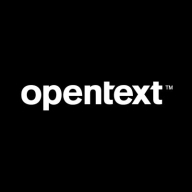

OpenText Analytics Database Vertica and Amazon Redshift compete in the data warehouse market. Vertica has the upper hand due to its robust clustering and quick query response times.
Features: Vertica is known for handling massive data volumes with superior analytics capabilities, scalable architecture, and dynamic query performance. It offers efficient clustering and high speed, especially in complex analytical queries. Amazon Redshift provides seamless integration with AWS services, making it ideal for users within the AWS ecosystem. Its scalability and flexible deployment options further enhance its appeal.
Room for Improvement: Vertica users often mention the need for improved documentation, transactional capabilities, and streamlined configuration options. The lack of out-of-the-box solutions can be challenging. Redshift users suggest better pricing structures, stability during heavy workloads, and improved integration features. Its cloud-based nature requires reliable support for smoother transitions.
Ease of Deployment and Customer Service: Vertica supports deployment across hybrid and on-premises environments, with mixed reviews on technical support. Some appreciate the knowledgeable team, while others experience slow response times. Amazon Redshift operates in the cloud, offering a smooth deployment process with generally positive support for responsiveness.
Pricing and ROI: Vertica offers a straightforward licensing model based on data size, which is seen as cost-effective for storing large volumes, despite initial high costs. Its real-time analytics contribute to strong ROI. Redshift's pricing, while reasonable for some, can be costly compared to alternatives like Snowflake and BigQuery. Flexibility in pricing models helps offset costs, particularly when scaling data in the cloud.
Whenever we need support, if there is an issue accessing stored data due to regional data center problems, the Amazon team is very helpful and provides optimal solutions quickly.
It's costly when you enable support.
The scalability part needs improvement as the sizing requires trial and error.
Amazon Redshift is a stable product, and I would rate it nine or ten out of ten for stability.
They should bring the entire ETL data management process into Amazon Redshift.
Integration with AI could be a good improvement.
The cost of technical support is high.
It's a pretty good price and reasonable for the product quality.
The pricing of Amazon Redshift is expensive.
Amazon Redshift's performance optimization and scalability are quite helpful, providing functionalities such as scaling up and down.
Scalability is the best feature of Amazon Redshift. Amazon Redshift handles scalability automatically, so we do not need to scale up or down; it is all managed by Redshift.
Scalability is also a strong point; I can scale it however I want without any limitations.
| Product | Market Share (%) |
|---|---|
| Amazon Redshift | 7.6% |
| OpenText Analytics Database (Vertica) | 6.2% |
| Other | 86.2% |



| Company Size | Count |
|---|---|
| Small Business | 27 |
| Midsize Enterprise | 21 |
| Large Enterprise | 28 |
| Company Size | Count |
|---|---|
| Small Business | 29 |
| Midsize Enterprise | 23 |
| Large Enterprise | 38 |
Amazon Redshift is a fully administered, petabyte-scale cloud-based data warehouse service. Users are able to begin with a minimal amount of gigabytes of data and can easily scale up to a petabyte or more as needed. This will enable them to utilize their own data to develop new intuitions on how to improve business processes and client relations.
Initially, users start to develop a data warehouse by initiating what is called an Amazon Redshift cluster or a set of nodes. Once the cluster has been provisioned, users can seamlessly upload data sets, and then begin to perform data analysis queries. Amazon Redshift delivers super-fast query performance, regardless of size, utilizing the exact SQL-based tools and BI applications that most users are already working with today.
The Amazon Redshift service performs all of the work of setting up, operating, and scaling a data warehouse. These tasks include provisioning capacity, monitoring and backing up the cluster, and applying patches and upgrades to the Amazon Redshift engine.
Amazon Redshift Functionalities
Amazon Redshift has many valuable key functionalities. Some of its most useful functionalities include:
Reviews from Real Users
“Redshift's versioning and data security are the two most critical features. When migrating into the cloud, it's vital to secure the data. The encryption and security are there.” - Kundan A., Senior Consultant at Dynamic Elements AS
“With the cloud version whenever you want to deploy, you can scale up, and down, and it has a data warehousing capability. Redshift has many features. They have enriched and elaborate documentation that is helpful.”- Aishwarya K., Solution Architect at Capgemini
OpenText Analytics Database Vertica is known for its fast data loading and efficient query processing, providing scalability and user-friendliness with a low cost per TB. It supports large data volumes with OLAP, clustering, and parallel ingestion capabilities.
OpenText Analytics Database Vertica is designed to handle substantial data volumes with a focus on speed and efficient storage through its columnar architecture. It offers advanced performance features like workload isolation and compression, ensuring flexibility and high availability. The database is optimized for scalable data management, supporting data scientists and analysts with real-time reporting and analytics. Its architecture is built to facilitate hybrid deployments on-premises or within cloud environments, integrating seamlessly with business intelligence tools like Tableau. However, challenges such as improved transactional capabilities, optimized delete processes, and better real-time loading need addressing.
What features define OpenText Analytics Database Vertica?OpenText Analytics Database Vertica's implementation spans industries such as finance, healthcare, and telecommunications. It serves as a central data warehouse offering scalable management, high-speed processing, and geospatial functions. Companies benefit from its capacity to integrate machine learning and operational reporting, enhancing analytical capabilities.
We monitor all Cloud Data Warehouse reviews to prevent fraudulent reviews and keep review quality high. We do not post reviews by company employees or direct competitors. We validate each review for authenticity via cross-reference with LinkedIn, and personal follow-up with the reviewer when necessary.